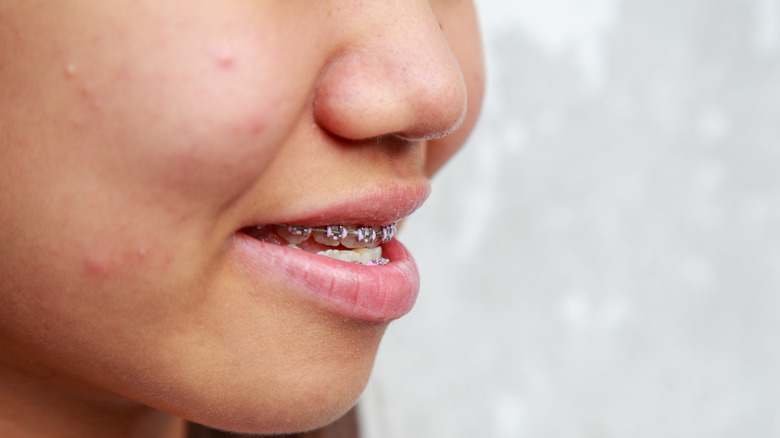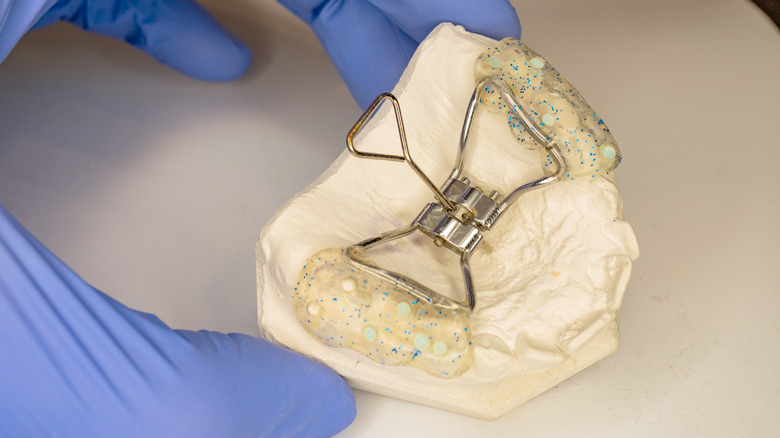This Is What Really Causes An Underbite
Affecting roughly one in every 20 people, an underbite — scientifically referred to as prognathism – is a type of dental malocclusion (via Westermeier Martin Dental Care). Malocclusion is defined as the misalignment of the teeth and encompasses various dental conditions such as overbites, underbites, teeth crowding, crossbites, and open bites, according to Healthline.
While many people deal with various forms of teeth misalignment today, a 2015 study of archeological skeletons in regions of Europe and Southwest Asia revealed that our hunter-gatherer ancestors were once shown to have nearly "perfect harmony" between their teeth and lower jaw. Eventually, dietary changes that took place among early farmers during agricultural development gave way to early cases of malocclusion.
Falling within the rarest class of malocclusion, those with an underbite have lower teeth that protrude further forward than their upper teeth, often causing pain or physical discomfort (via Koch Orthodontics). Depending on the severity of the case, an underbite may also cause difficulty eating, sleep apnea, snoring, speaking difficulty, tooth decay, halitosis, or chronic jaw or joint (TMJ) pain, among other symptoms (via Westermeier Martin Dental Care).
Your underbite may be linked to genetics, childhood, or injury
The development of an underbite may be genetic or due to external factors. Our genes determine our jaw size and tooth shape, therefore, if one or both parents has an underbite, the child is likely to also inherit the trait (via Koch Orthodontics). External factors such as ongoing childhood behaviors like thumb sucking, bottle feeding, or pacifier usage can also increase one's chances for developing an underbite. Additionally, damaging facial injuries can also result in misalignment of the jaw, including an underbite.
To correct an underbite, various options are available that range from surgery to the use of dental equipment (via Koch Orthodontics). For more mild cases, braces are commonly used. Additionally, headgear such as a reverse-pull face mask or upper jaw expander can also be used, both of which work by pulling the upper jaw forward back over the lower teeth. In more severe cases, surgical procedures to shorten the lower jaw, lengthen the upper jaw, or hold the jaw in place may be an option for some patients.
According to experts at WebMD, realignment has the best success rate when done early such as during childhood or pre-adolescence while the jaw is still malleable.


